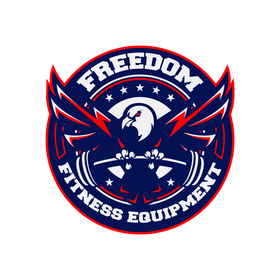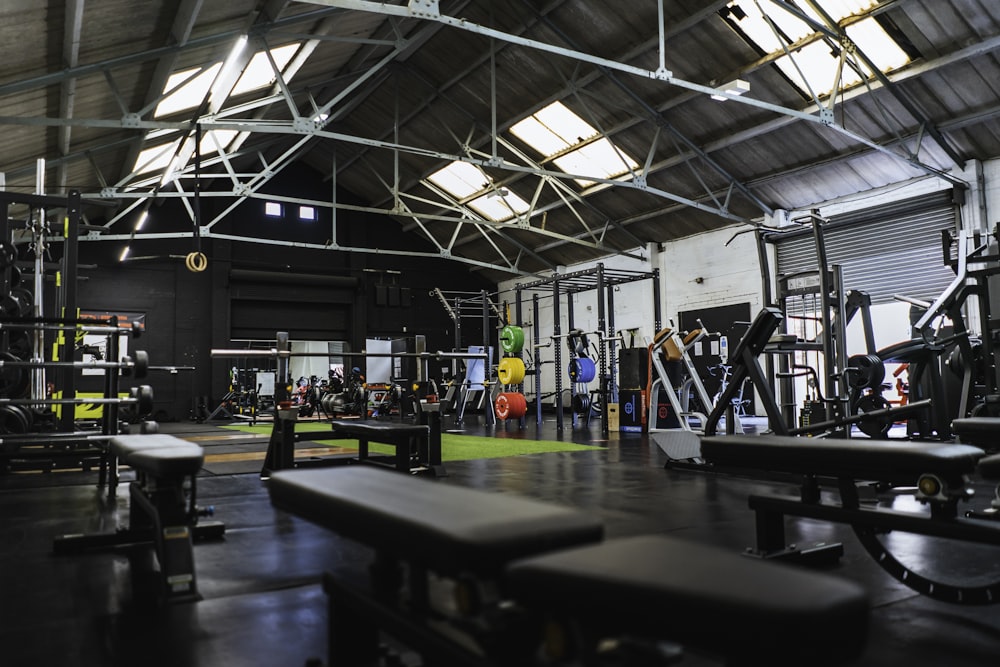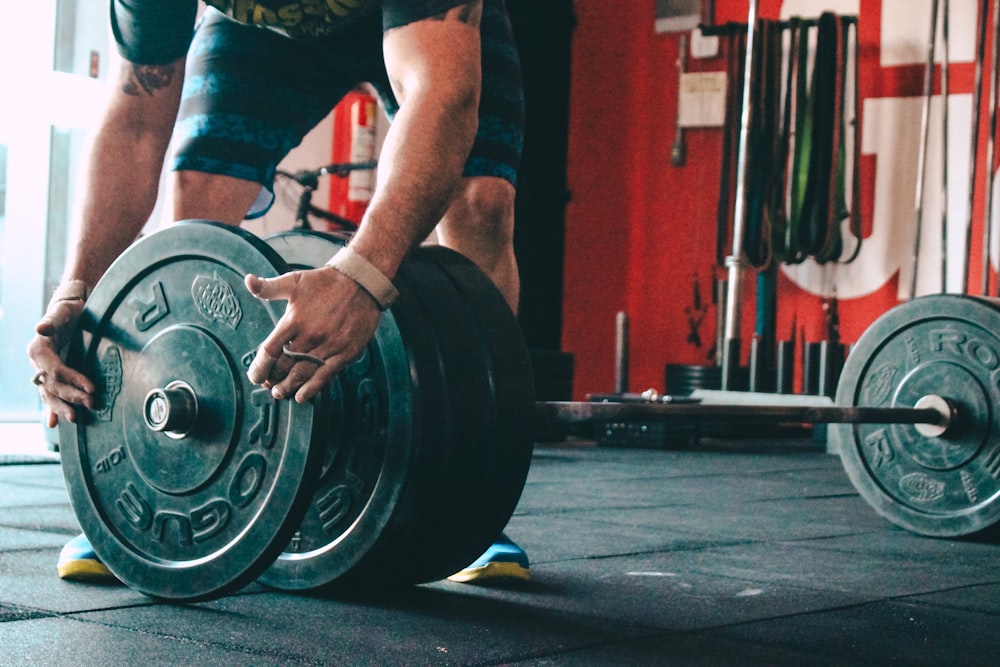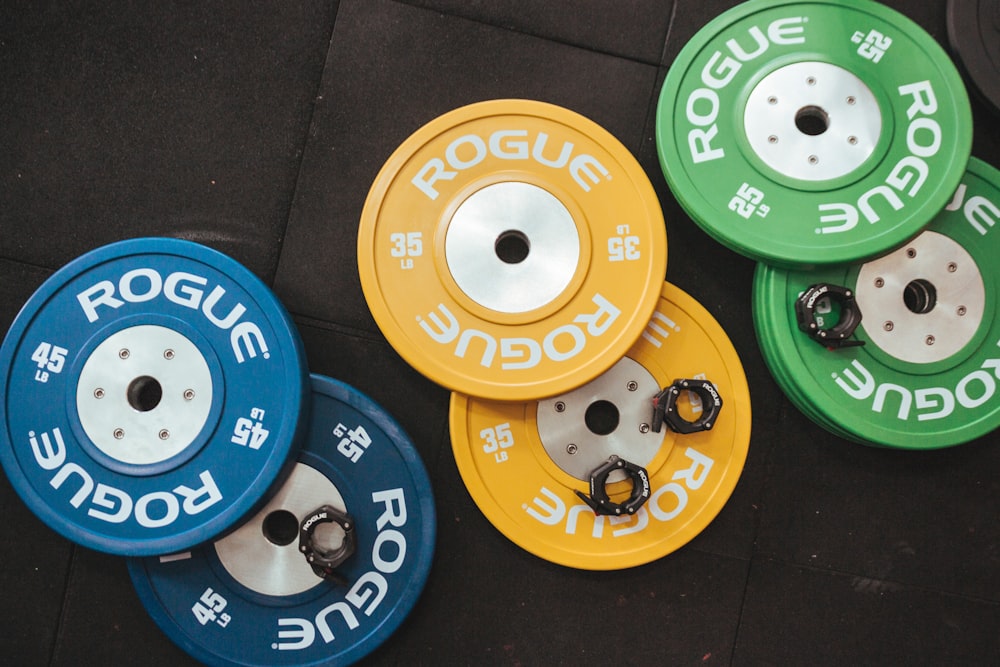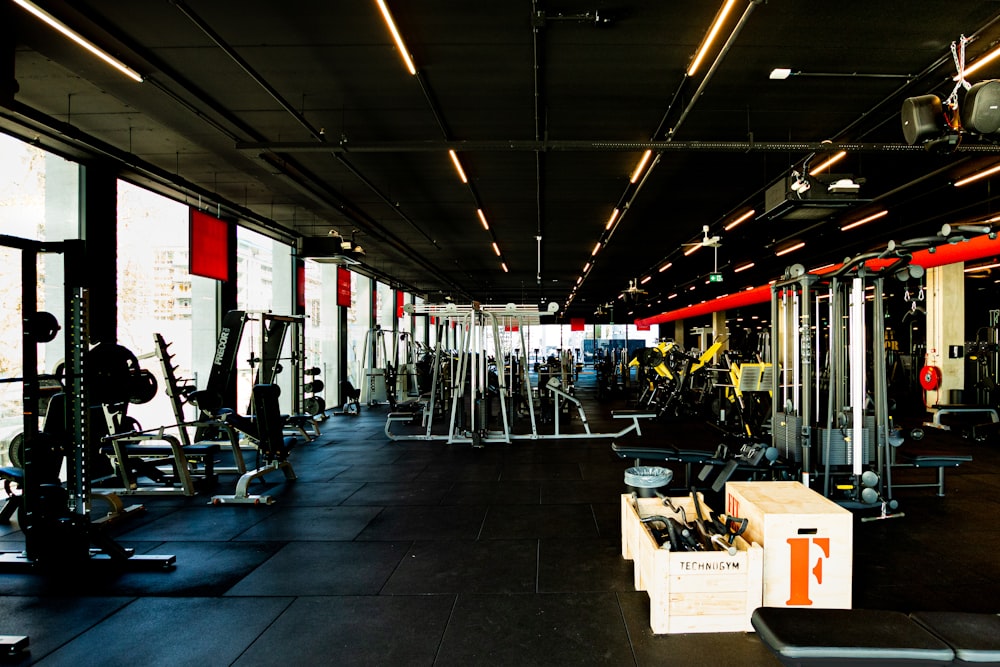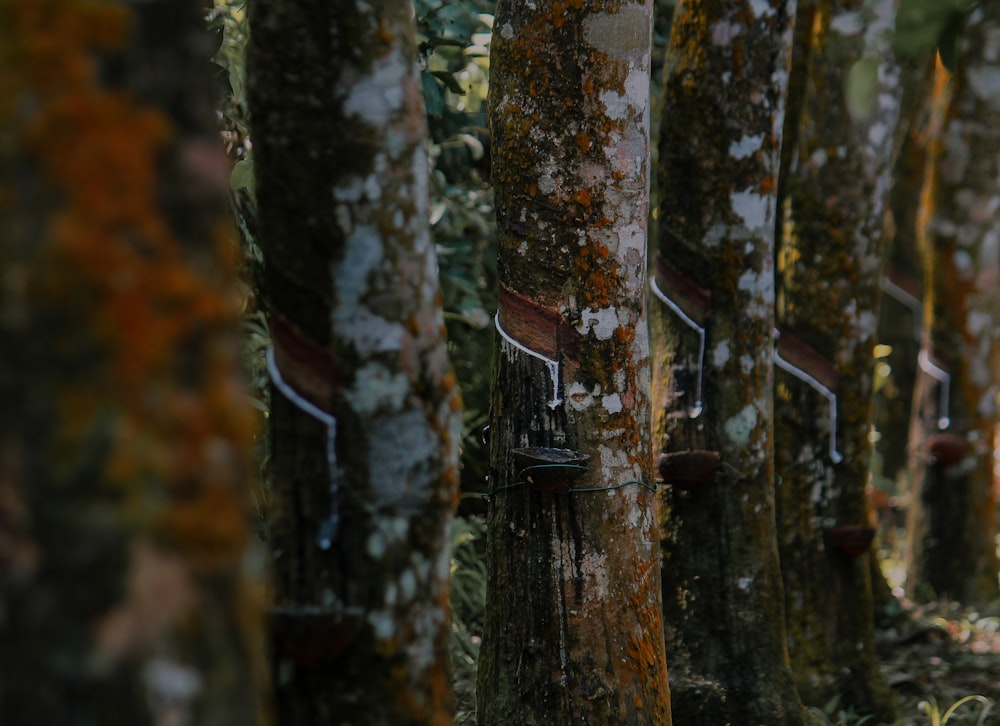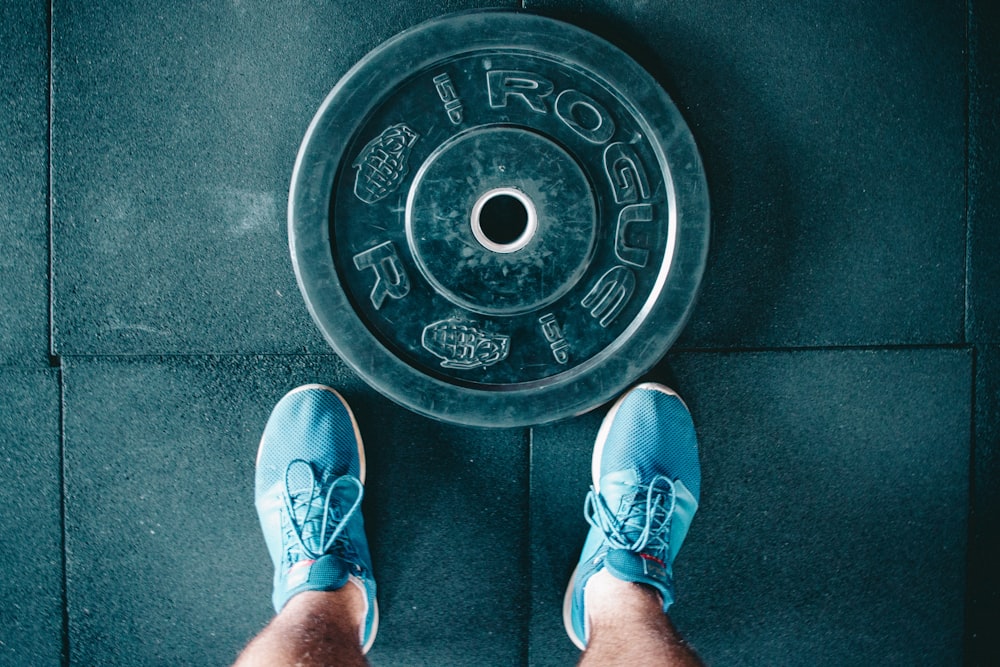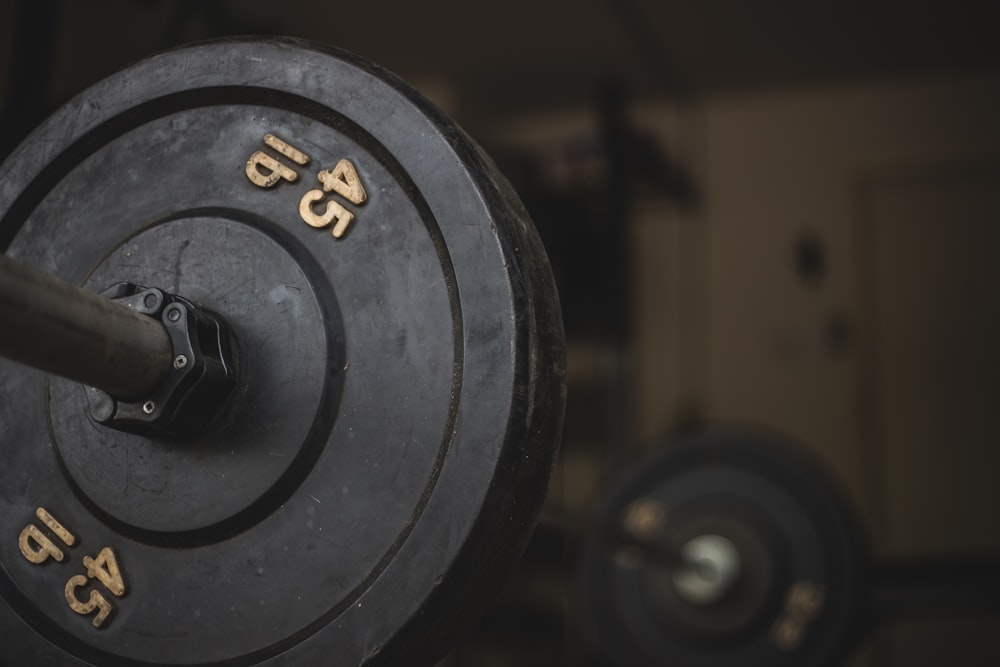Looking for the best rubber gym flooring for high school weight rooms? Whether you’re building a new facility or upgrading an old one, choosing the right surface is critical for athlete safety, durability, and daily performance.
Weight rooms are where championships are won. Most people will focus on gamedays, the playoffs, or even practice, and while each of these is critical, the truth is for many high school sports — especially football — the ones who work the smartest and hardest in the offseason play the best when it counts. Showing up and showing out in the weight room is how championship high school football teams are built.
At the high school level, almost every school is offering some sort of weightlifting program.
Whether it’s part of PE, a strength and conditioning class, or tied to your school’s athletic program, weight training is essential.
If your school doesn’t offer your athletes — especially football — the opportunity to lift weights with a qualified coach, you are already behind. The good news is that most schools are already doing this. Regardless of where your school stands today, all high schools should have a weight room, and it is essential that the weight room is safe, clean, and functional.
Are you a high school coach, athletic director, or administrator? Then you’ve likely asked the question: What is the best rubber flooring for schools — and how do I choose the right option for our athletes?
Let us help you answer this question quickly, so you can focus on what really matters — like this week’s game, parent pickup, and helping your athletes succeed.
When it comes to school gym flooring, there are a few choices — wood, foam, plastic, even concrete — but rubber flooring stands out for good reason.
Why Rubber Gym Flooring?
When it comes to school gym flooring, rubber is hands-down the best choice. Rubber gym flooring is the only option you should be considering for weight room flooring.
Rubber floors are easy to clean.
Since they are naturally water-resistant, they can easily be cleaned with a mop and bucket, sanitizing wipes, or any other method involving water and soap. This is helpful for any gym, but especially a high school weight room. The combination of sweat, germs, sickness, and high schoolers all in one room means you are going to prioritize keeping the room as clean as you can. And cleanliness shouldn’t fall solely on the coach — every student-athlete should be responsible for their space, including wiping down equipment and keeping their area of the floor clean.
It is designed to protect the flooring underneath from the heavy equipment. It creates a buffer between the equipment and the flooring underneath that provides greater defense against barbells, weight plates, and machines.
Depending on the type of training your school is performing in the weight room, being able to drop the barbell with weight plates may be necessary. Olympic lifts — like cleans, jerks, and snatches — are highly technical and explosive, but they help build power and athleticism.
Imagine dropping a barbell — anywhere from 35 lbs to 350 lbs — on cement, plastic, or wood floors.
That’s a disaster waiting to happen for your facility, your equipment, and most importantly, your athletes. Even if Olympic lifts aren’t part of today’s program, durable school gym flooring gives students room to grow while protecting your space long-term. Next season could bring power cleans or snatches — rubber flooring ensures you’re ready for it.
Rubber flooring is also slip-resistant.
It is designed to protect the flooring underneath from the heavy weightroom equipment. It creates a buffer between the equipment and the flooring underneath that provides greater defense against barbells, weight plates, and machines.
Depending on the type of training your school is performing in the weightroom, being able to drop the barbell with weight plates may be necessary. Olympic lifts such as cleans, jerks, and snatches are great at developing explosive athletes. They are highly technical, but once learned can be an important piece in a high school lifting program. Olympic lifts all benefit from or even require the ability to drop the barbell from overhead.
Imagine dropping a barbell that weighs anywhere from 35 lbs to 350 lbs on cement, plastic, or wood floors.
That’s a disaster waiting to happen for the safety of the floor, the equipment, and your athletes. Even if your school is not directly planning on using these exercises often, it is a good idea to still go with rubber for a few reasons we will continue to look at. Plus, who knows next season you or your coach may change their mind, and with rubber you always have the option to perform these exercises.
Rubber flooring is also slip-resistant.
This is a huge bonus for the performance and safety of your athletes. Letting your athletes focus on performing instead of worrying about slipping is just one less thing to think about.
Slip-resistant gym flooring is crucial in schools, where sweat, moisture, and heavy use are part of the daily routine. Rubber’s natural grip gives your students more confidence with every lift, jump, or movement.
A final bonus to rubber flooring is the potential for designs.
Rubber flooring allows you to imprint your school logo on the floor. You can also choose rubber flooring that has your school's colors in the specks. Is it necessary? Maybe not. Is it a flex? Absolutely. A clean, safe, and modern weight room is going to attract more athletes than one that’s dirty, unsafe, and hasn’t seen a facelift in decades. Of course, not every school has the same budget — but if you can invest in high-quality, long-lasting rubber flooring for your school’s gym, it’s a smart and lasting move.
Hopefully, these reasons are enough for you to ignore any other flooring options.
In all seriousness, rubber flooring is the gold standard when it comes to school gym flooring and high school weight rooms.
The question now becomes: What kind of rubber gym flooring is right for your school?
Tiles, Rolls, or Mats?
So we’ve established rubber is king. But which is best for your high school weight room? There are three primary types of rubber gym flooring.
Rubber tiles, rolls, and mats.
Rubber tiles are often interlocking and look like giant puzzle pieces. They are the smallest of the three options - typically around 2’x2’ - and are the easiest to install. These are an excellent choice for smaller spaces or temporary installs, like home gyms or individual lifting zones.
Rubber mats are typically slightly bigger. Oftentimes, these mats are placed under a machine or a power rack. Rubber mats tend to be used to cover large portions of a weight room, but not always the entire floor.
For most high school gyms, rubber rolls are the top pick. They’re affordable, offer full coverage, and don’t leave seams — which gives the room a cleaner, more professional look. The only downside? They’re more labor-intensive to install. But if you’re covering a whole room, they’re usually worth the effort.
At the end of the day, you’ll be fine with any of these three. You could even mix and match — placing mats or tiles under racks and platforms, and rolls in open areas. Covering the full weight room looks best, but it’s not a must.
The next question to answer is what type of rubber?
Vulcanized, Non-Vulcanized, or Natural?
Unless you’re an expert, you probably weren’t aware of just how many different types of rubber options exist. Let’s break it down quickly.
Nothing more original than natural rubber - straight from the rubber tree.
The sap from the rubber tree is known as latex and is used to create rubber mats. But most modern gym flooring — especially in schools — is made from synthetic or recycled rubber. One of the biggest reasons for this is that some people are allergic to latex. That makes natural rubber less ideal for high-traffic areas like high school weight rooms. Synthetic rubber is lab-made but shares a similar chemical makeup to natural rubber — without the latex. Synthetic rubber also tends to be more durable, which is a major plus - especially given how much foot traffic can be in a high school weight room.
Synthetic rubber was created in a lab, and honestly, it’s pretty complex. How it’s made isn’t all that important, but it has a similar chemical makeup to rubber. Synthetic rubber also doesn’t contain latex, which is a plus.
Finally, we have recycled rubber. Recycled rubber is exactly what it sounds like and is either natural, synthetic, or a combination of the two. When you think about rubber in your everyday life — from shoe soles to home gym flooring — all of it is recycled rubber. The biggest contributor to recycled rubber is tires. Just imagine for a second, just how many tires there are in junkyards and on the road today, whether on cars, trucks, or even eighteen-wheelers, that’s a ton of tires. Using recycled rubber flooring gives those materials a second life — and gives your school a more eco-conscious gym upgrade.
According to the U.S. Environmental Protection Agency’s 2024 Federal Research Action Plan, recycled rubber from old tires may contain trace chemicals — but actual exposure levels were no higher than what’s found in the general population. Athletes using rubber surfaces didn’t show any increase in harmful compounds compared to those playing on grass.
This means recycled rubber products can be a safe, sustainable, and durable choice for school gym flooring — supporting strength, shock-absorption, and long-term use without compromising health.
Bottom line? Recycled rubber is a safe, sustainable, and durable choice for school gym flooring. It’s tough enough for daily use, supports shock absorption, and gives your school a flooring solution you can feel good about — on every level.
Okay, I promise we are almost done with the different types of rubber, but there are two last points regarding recycled rubber.
Almost all rubber gym flooring falls into one of these two groups — vulcanized and non-vulcanized.
Vulcanized and revulcanized are essentially the same.
If you’re looking for long-lasting gym flooring, this is the type to prioritize. Vulcanized rubber mats, tiles, or rolls are stronger and more stable.
They don’t give, curl up, or change shape. Vulcanization is a process that uses binding agents with the rubber. The two ingredients are then heated to form a stronger rubber. Non-vulcanized typically uses a pressing system that applies force to press them together.
Again, you won’t go wrong with any rubber gym flooring, but I would go with either the vulcanized or revulcanized. The only downside is that these two types of rubber flooring tend to smell a little bit more, so you are going to want to air them out for a couple of days before installation.
Okay, so far vulcanized is what we want for the type of rubber, and rolls are the best option for cut. Let’s now look at how thick the rubber should ideally be.
What Thickness Should Rubber Gym Flooring Be?
Rubber flooring typically comes in thicknesses from 8mm to 2+ inches.
The most common rubber gauges are ⅜”, ½”, and ¾”.
Generally, the thicker the rubber flooring mat, the better off you are going to be in terms of durability. However, the thicker the mat, the higher the price and the worse the smell may be. So, certainly, some things to consider. For a high school weight room, any of these three options would work. I wouldn’t go any lower or any higher either.
You want to make sure your floors are protected and your rubber mats are durable enough to last you many years.
At the end of the day, schools have made horse stall mats work. Having rubber flooring is the biggest key here. As far as which cut, which type of rubber, and which thickness - I certainly think rolls, vulcanized rubber, and somewhere around ½” are going to give you the best gym flooring option, but if you decide to go with mats under part of the weightroom or even tiles, as long as they are thick enough you are going to be golden.
At Freedom Fitness, we offer a wide variety of rubber flooring options.
From mats, interlocking tiles, and rolls, we have it all. We offer a full range of solutions to help your high school install durable, non-slip, and long-lasting rubber flooring for weight rooms and school gyms.
The real question now becomes, once your new gym floor is installed, what equipment does your school need to be the best it can be?
After all, a pretty gym floor is nothing without adequate equipment.
Here are some of the must-have pieces of equipment your high school weight room needs.
First off, start with power racks.
A good weight room needs multiple power racks so that student-athletes can squat, bench, overhead press, do pull-ups, and so much more. Power racks allow student-athletes to group together and build teamwork and camaraderie, as you typically have about three to four athletes at each rack. This allows one athlete to lift, one to spot, one to rest, and one to perform another exercise. Each athlete has a job to do, and everyone can improve together. When looking at power racks, be sure to get one that has a pull-up bar. It doesn’t take up any additional space and gives your athletes a chance to get much stronger pulling.
Now, if we have a power rack, it’s not very useful without a barbell and weight plates.
A barbell is critical when it comes to high school weight rooms - allowing you to perform exercises like bench press, squats, cleans, Romanian deadlifts, and so much more. With weight plates, the progressive overload each week and ultimately each year will allow your athletes to continue to get bigger and stronger. Be sure to get an Olympic barbell, as this will enable you to perform cleans and snatches better. After all, you just bought that beautiful new rubber gym floor, so you might as well make the most of it and drop a barbell or two.
There are a few other things I think are very important when it comes to what goes on top of the rubber floor - dumbbells and benches, among others. But as we finish, I want to highlight a couple that you may not have thought of.
First, resistance bands.
I’m talking about the large bands. These are great for mobility and strength. Resistance bands allow exercises like good mornings, banded face pulls, biceps curls, triceps pushdowns, and many others to be done without any other equipment. These are great, especially if you have a large team or class, and can use these as an accessory for the third or fourth athlete at a power rack.
Lastly, medicine balls.
But not the small hard ones. The ones you may see are called “wall balls.” They are larger and softer. They are incredible for building explosive power in your athletes. With these medicine balls, you can perform chest passes, overhead tosses, lateral shuffles into a medicine ball throw, and many others. All of these will help athletes in all sports, but some of the rotational components medicine balls allow for can help your quarterbacks, tennis, baseball, hockey, and lacrosse athletes.
Okay, let’s wrap it up.
Vulcanized rubber rolls, about ½” thick - this is the best choice.
You’ve got options — but for most high schools, this type of rubber flooring is the clear winner.
Sources
Rubber Flooring - Largest Selection - RubberFlooringInc, https://www.rubberflooringinc.com/. Accessed 7 October 2023.
“The Differences Between Recycled Tire Rubber Flooring and Vulcanized Rubber Flooring.” Mondo Worldwide, https://www.mondoworldwide.com/na/en/spaziomondo/doyouknow/differences-recycled-tire-rubber-flooring-vulcanized-rubber-flooring/. Accessed 7 October 2023.
Richmann, Kif. “Vulcanized Rubber Flooring vs. Non Vulcanized Rubber.” Greatmats, https://www.greatmats.com/rubber-gym-flooring/vulcanized-vs-non-vulcanized-crumb-rubber-gym-flooring.php. Accessed 7 October 2023.
Stromberg, Amber. “How to Choose Flooring for a School Weight Room.” Kiefer USA, 10 September 2022, https://www.kieferusa.com/blog/school-weight-room-flooring-options/. Accessed 7 October 2023.
“Why Does My Rubber Gym Flooring Smell So Bad?” Freedom Fitness Equipment, 19 June 2023, https://freedomfitnessequipment.com/blogs/freedomcast-articles/why-does-my-rubber-gym-flooring-smell-so-bad. Accessed 7 October 2023.
